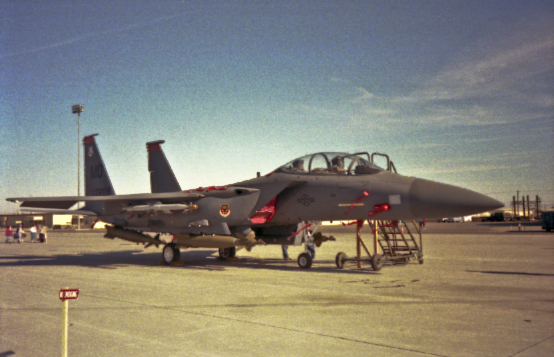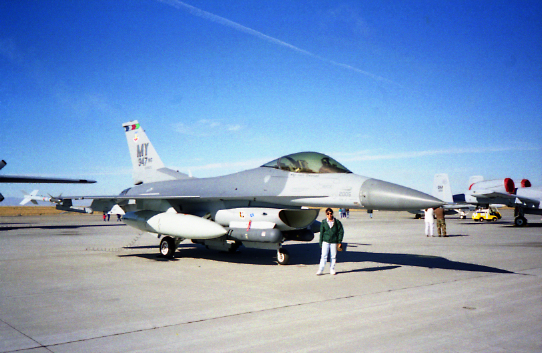It’s interesting how the title of this post is a palindrome of sorts. Of course, the letters don’t reverse well, but that’s a technicality…
The first 20 minutes of class was spent discussing the War/Photography exhibit at the MFAH. It was prompted by the professor wanting to let us know that the exhibit is closing soon, and that we would benefit greatly from taking it in prior to its exit from Houston. From there various students, who had already seen the exhibit, shared their thoughts of it. We even started to branch out when one started talking about the Oklahoma City memorial. I found her discussion points interesting as she described a part of the memorial I had not visited. Of course, I have made my feelings on the main part of that particular memorial known (click here for a refresher).
Since I’ve seen the exhibit, I’ve had a chance to think a little deeper regarding the exhibit. I’m not talking so much about the exhibit itself, but rather how it relates to the questions asked at the beginning of the semester regarding how I’m affected by constant exposure to a hyper saturated media world.
I mentioned previously that, having been exposed to some rather gruesome wartime imagery in the past, that, aside from a few select photographs, I wasn’t really taken back by any single image I saw on the walls at the museum. At the end I was more impressed with the overall breadth of the exhibit in terms of size and types of pieces it contained. I realized, when I started thinking about it, that my lifetime and my experiences had caused me to become desensitized to the images I had seen 2 weeks ago. The general message I received listening to the other students’ reactions was one of an experience like no other in terms of recording human activity. To say they were moved by this seems to be an understatement.
My age (I’m probably the oldest student in the class) has less to with my reaction than my status as a veteran. Of course, I had more time on this earth in which I could see many of these images and take in other forms “war material,” for lack of a better term. During my chemical warfare training we were exposed to all manner of images regarding the direct effects of chemical weapons on people. It’s still rather difficult to forget the images of men, women, and children who were the victims of blistering agents. The videos of people in uncontrollable convulsions following exposure to nerve agents are also unforgettable. And you could forget about it if you were exposed to blood agents – there was no antidote and the gas mask/chemical suit combination was only effective for a short amount of time before the chemicals began to penetrate. The whole point of seeing these images was drive home the importance of maintaining our gear as we weren’t issued practice gear for exercises – when we got to a new base we were given a gas mask that was to be our protection in the event of a chemical attack.
Curiously, WMD documentation, aside from some photos of Hiroshima and Nagasaki, was missing from the exhibit.
Driving home the seriousness of what we were about to learn is important, especially since the threat of an enemy actually carrying out an NBC (the 1990’s terms for WMD) attack at the time was very remote, especially when you take into account a speech by Vice President Dan Quayle in 1990 where he refused to rule out the use of nuclear weapons in response to any chemical attacks by Saddam Hussein in Operation: Desert Shield. With the chemical weapons images and videos (none of which were classified), and the images I saw while certifying as my unit’s SABC instructor, the process of desensitization began. These images were showing direct results of implementations of the weapons of war and subsequent actions needed to ease the suffer, but as time went on, I starting losing my capacity to be appalled by the cruelty of humans, especially in regards to cruelty towards other humans. In 1993 the world bore witness to 2 simultaneous genocide campaigns – in Rwanda and Bosnia-Herzegovina. The images and stories out of those areas also accelerated the process in me.
In 2002 and 2003 we were often treated to videos and still images of the cruelty by the government of Saddam Hussein in the run-up to Operation: Iraqi Freedom. In 2004 I saw the photos of the prisoner humiliations at Abu Ghraib prison. At the time I was appalled, but not nearly so much as a decade earlier. I didn’t even think about the change in my reaction at the time.
All of the images were shown to achieve a desired effect. In the case of the chemical warfare/battlefield medicine images, it was to drive home the seriousness of lessons. In the case of the genocides, Saddam Hussein, and Abu Ghraib, it was to stir sympathy for the victims and outrage against against the perpetrators of the crime. For me, as time has gone on, those effects are less and less powerful.
Does this make me a monster? I don’t think so. I think it makes me human. Just as people who have to see shocking things every day become desensitized to the situations before them, I have become thus by an exposure to the appalling imagery of war. I’m in no way trying to diminish what our paramedics, police, soldiers, et al, do every day. Having been a part of the military, even though I never took part in direct combat, I will never lose my appreciation for what they go through in their daily tasks. It is a little shocking, however, to reflect back on the first time seeing images of this subject matter and comparing one’s reaction to seeing the same types of images 20 years later.
With that I will leave you with a couple of propaganda photographs. Aesthetically, the weapons of war can be very pleasing. There has never been a time in recorded human history that war was not happening somewhere on the planet. Artists are no longer able to romanticize war itself, but they can still impart the beauty of the weapons. Behold the 2 main weapon platforms of the United States Air Force in the 1990’s – the F-15E Strike Eagle and the F-16 Falcon.


Leave a Reply